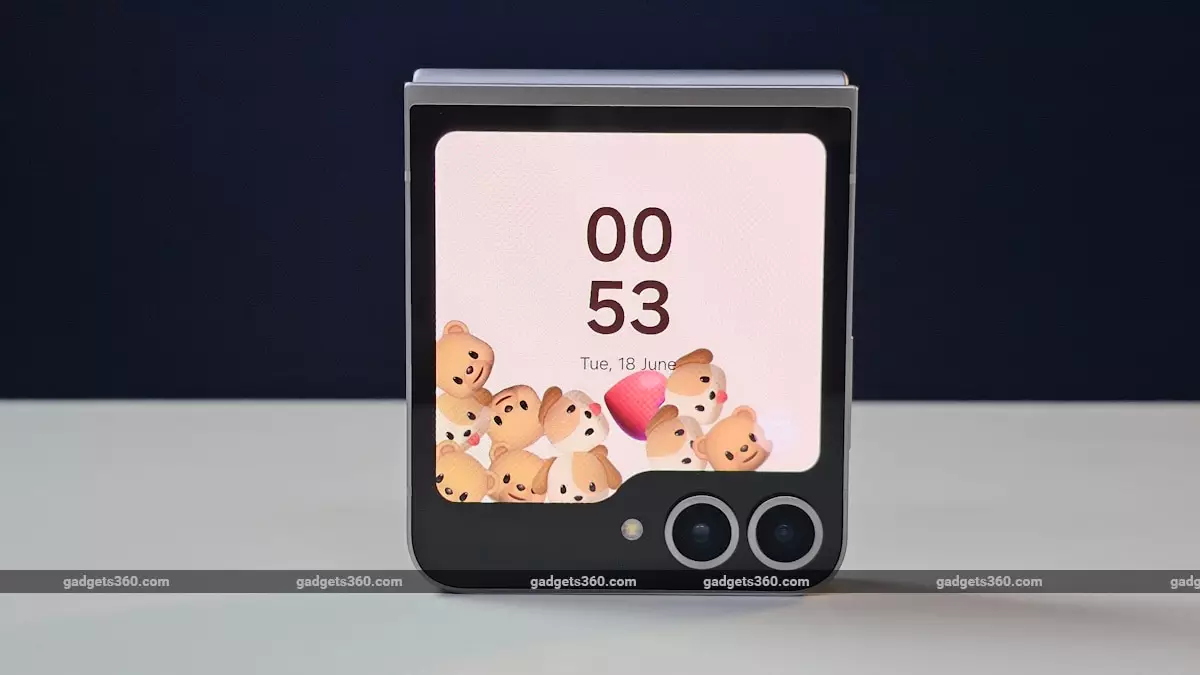The evolution of smartphones has reached a fascinating juncture, and foldable devices are at the forefront of this revolution. Among the contenders, Samsung’s Z Flip series has garnered attention for its innovative design and sleek usability. As the tech giant prepares to launch its latest iteration, the Galaxy Z Flip 6, there is exciting news about an innovative feature that aims to redefine how users interact with their phones, particularly in terms of privacy during calls. The integration of piezoelectric technology for sound production indicates not just an enhancement in functionality but a transformative approach to design in the world of foldable smartphones.
One of the most significant challenges with current clamshell-style foldable phones is maintaining privacy while receiving calls. Traditionally, users have had no choice but to open their devices to answer a call privately, as the standard ear speaker is inaccessible when the phone is closed. Many users find this inconvenient in numerous situations, such as in public or during meetings. With Samsung reportedly collaborating with LG to address this, the potential adoption of a revolutionary display technology could change the game.
This development suggests that the forthcoming Z Flip may allow users to engage in private conversations without the need to unfold the phone. The new piezoelectric system is designed to make sound without requiring a dedicated ear speaker, thus addressing space limitations that often challenge the design of foldable devices. This integration exemplifies how manufacturers are prioritizing user experience, focusing on functionality without sacrificing elegance.
Piezoelectric technology, which involves the creation of sound through vibrations of the material, represents a significant shift in how audio can be perceived within mobile devices. Unlike traditional speakers that require dedicated components, integrating this technology into the display allows for a sleeker design. The upcoming Galaxy Z Flip is expected to leverage this technology by embedding an innovative sound component directly within the layers of the phone’s display.
This approach promises to eliminate the need for an additional speaker unit typically situated at the top of smartphones, which consumes precious internal real estate. By occupying dual roles—both display and speaker—the new design not only enhances audio transmission but opens the door for more compact and multifunctional hardware layouts.
While this technology is a recent development for Samsung, the use of piezoelectric systems is not entirely new to the smartphone market. Xiaomi’s Mi Mix, released back in 2016, was the first smartphone to harness this technology by introducing a unique acoustic ceramic earpiece. Although its design aimed to minimize bezels, the Mi Mix ultimately spotlighted both the potential and limitations of piezoelectric sound production.
Interestingly, the technology garnered mixed reviews—while it certainly added to the aesthetic allure, comfort and sound quality were sometimes overshadowed by the innovative form factor. The Mi Mix 2, its successor, opted for conventional sound components instead, illustrating the ongoing challenges that tech companies face in balancing innovation and user satisfaction.
Samsung and LG’s collaboration sets a precedent that could influence the entire smartphone industry and beyond. As clamshell smartphones continue to gain traction, innovations that prioritize space efficiency and user engagement will be paramount. If successful, piezoelectric displays may lead the way for other brands to explore similar technologies, encouraging a competitive ecosystem where sound performance and design coalesce.
As foldable devices are still in their infancy, improvements like those proposed for the Galaxy Z Flip could signal the dawn of a new era where user privacy, functionality, and innovative design are seamlessly interwoven. In a landscape where every millimeter counts, Samsung’s pioneering spirit, in partnership with LG, could redefine standard expectations in the smartphone market, paving the way for the next generation of mobile devices that respect both form and function.
The advent of piezoelectric technology in foldable phones not only addresses a practical concern but symbolizes broader changes in the smartphone industry. As we look forward to the Galaxy Z Flip 6, it will be fascinating to see how this innovation enhances the user experience and influences future designs in a rapidly evolving market.

Leave a Reply